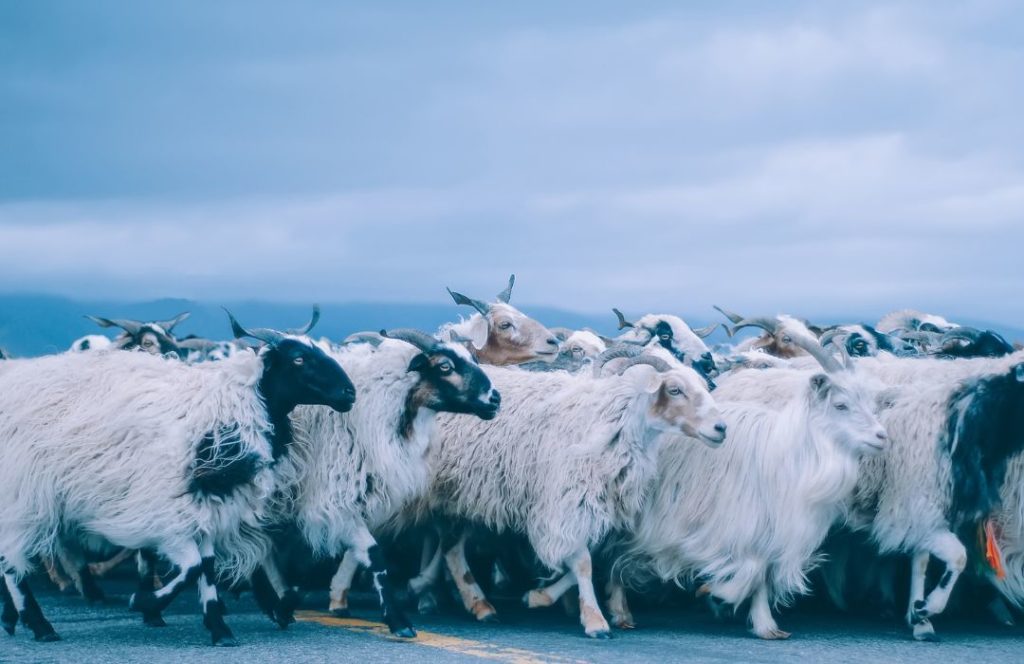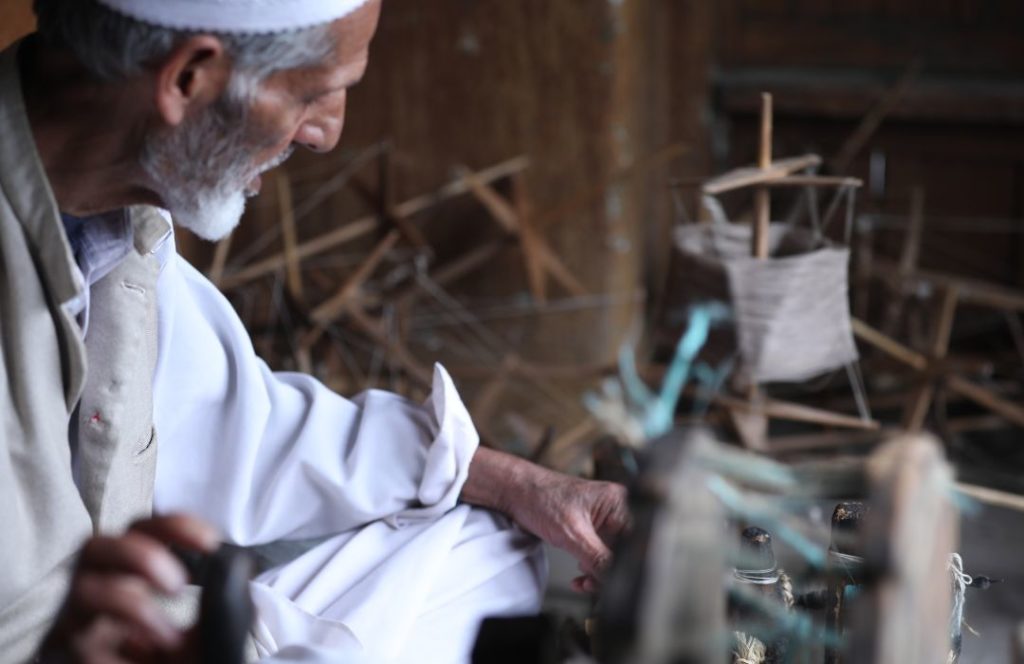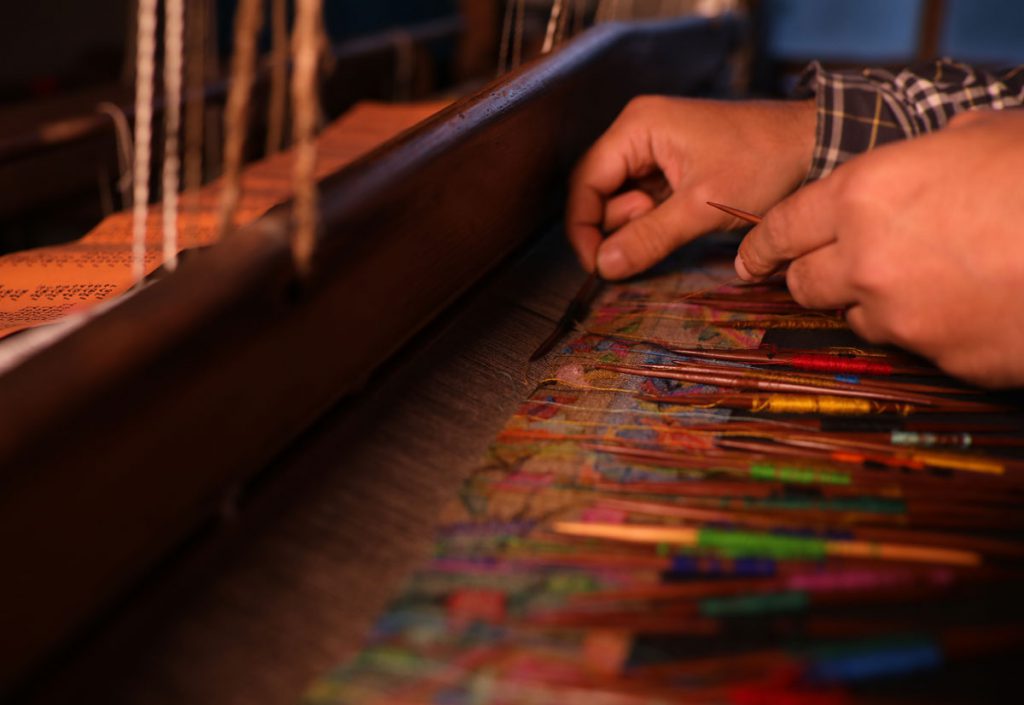Kani Pashmina is more than a fashion statement; it is a symbol of Kashmir's rich cultural heritage and timeless elegance. Whether draped as a shawl or worn as a wrap, Kani Pashmina outperforms trends, becoming a piece of wearable art that stands the test of time. It exemplifies not just warmth for the body but a cultural warmth that resonates through generations.
The Kani Pashmina originated in the era of 3000 B.C. Mughals have been into its intricate designs and exquisite presence from that century. The Kani word belongs to the parlance of the Kashmiri language where it has roots in the place of Kanihama, Ganderbal. Moreover, the name also belongs to the meaning of small twig-like sticks in the local language called Kanis. Before knowing the ways to wear this luxury, there needs to be an understanding of how a Kani Pashmina Shawl crafted.
While rooted in tradition, Kani Pashmina has also embraced modern interpretations. Contemporary designers are exploring ways to integrate Kani weaving into a variety of fashion styles, ensuring that this ancient craft remains relevant and appealing to a global audience. It is a living tradition that continues to evolve with the times.
Procuring the finest Cashmere

From the Changhthanghi mountain, the beginning of the journey starts. There is the dwelling of a rare species of goat called Changra Goats. Medium-sized goats with two twisted horns. Mainly herded by the tribe of Changpa. In the Changhthanghi region, the temperature goes to -40°C in winter. Thus, the Changra goats develop an undercoat of thick wool over their bodies. Thus, protecting themselves from the harsh climate. The wool is thick and soft. It is called Cashmere wool. The Cashmere wool of Ladakh is the finest among all the production of Cashmere wool. There are several breeds of goats that produce cashmere wool. But, the finest among all is the Ladakhi Cashmere wool.
Crafting in Pashmina

After the tufts of wool reach the Valley of Kashmir, the wool is cleaned and soaked. This signifies the beginning of Pashmina Art. Further, the cleaned and soaked wool is dried in nature to preserve the essentiality in its natural form. The cleaned and dried Cashmere wool, distributed to the local households of the Valley. There begins the next step of Pashmina Art, Spinning. Spinning is the translation of fine Cashmere wool to the finest Cashmere yarn on a wooden wheel called yinder. Mainly done by the womenfolk of the Kashmir Valley.
After the process of Spinning, the process of transforming Cashmere yarn into fine Cashmere fabric begins. It is done by the process of Weaving. It is the translation of Cashmere yarn to Cashmere fabric. Therefore, the weavers of the Kashmir Valley profoundly weave the fine yarn into the fine fabric on the handloom made of forest wood. The process of weaving is to use Cashmere yarn to create warps and wefts. Thus, producing a whole fine Cashmere fabric.
Artistic Weaving of Kani Pashmina

The weaving of Kani Pashmina is not the simple weaving usually done in Pashmina Art. Also, it is the most intricate weave that performs with the Kanis or small twigs creating a marvelous design on the finest Cashmere base. Before commencing the weaving, the Pashmina Shawls, given a specific pattern on graph paper, unlike other styles of shawl. The patterns are imprinted in the base of the shawl itself. Each pattern known as, “Taleem”, codes written on the graph paper, given by local people. The artisans read and understand the codes and start the weaving process with precision.
The fine Cashmere fabric reaches the handlooms in local workshops/karkhanas. The weaving begins by whirling the colorful threads around the Kanis making small spindles. Moreover, the artisans skillfully do the weave with their hands. They work on the handloom by using their hands to move their spindles of threads accordingly. Moreover, a particular number of Kanis, used for the weaving of one Kani shawl. Around 70 to 100 Kanis, used up for the design of one Kani Pashmina Shawl. Also, the arrangement of the Kanis on the shawls and the high skill of artisans perform meticulously to create the intricate designs.
Also read: THE RISE OF ARTISANAL CASHMERE: HANDCRAFTED PIECES AND SLOW FASHION
Luxury of Kani Pashmina
Kani Pashmina, a zenith of Kashmiri craftsmanship, is a rare and luxurious variant within the realm of Pashmina textiles. The name "Kani", derived from the intricate weaving technique employed in the creation of these shawls. Originating from the scenic valleys of Kashmir, Kani Pashmina involves a meticulous process where each thread is meticulously woven by hand using small eyeless sticks known as "kanis." The tapestry of breathtaking beauty, with patterns and motifs that tell stories of Kashmiri culture, heritage, and artistry. The craft of Kani Pashmina is not just a skill; a legacy passed down through generations, with artisans earmarking years to mastering the technique and creating these heirloom-quality shawls , revered for their timeless elegance.

Beyond its exceptional craftsmanship, Kani Pashmina carries with it a cultural significance deeply intertwined with Kashmiri traditions. Many Kani shawls feature intricate designs inspired by the region's flora and fauna, architectural motifs, and historical narratives. The creation of a single Kani Pashmina shawl can take months, even years, with artisans pouring their skill and dedication into every delicate detail. As a result, Kani Pashmina not only exemplifies the heights of Kashmiri weaving expertise but also stands as a living testament to the rich cultural heritage of the Kashmir Valley. Each Kani shawl is a masterpiece, a fusion of art and tradition that transcends time, making it not just a garment but a piece of wearable art that encapsulates the significance of Kashmir's craftsmanship.
Also read: PASHMINA AS A LUXURY TO FASHION
Geographic Identification (GI)
A geographical indication (GI), a token attached to products that come from a specific geographical origin. To get a GI, a particular sign is used to identify a product having its manufacturing in a particular place. Moreover, geographical identification enables the craftsmanship of the place to only have the right to manufacture which means no third party can be applicable to manufacture the product. Therefore, the GI authentication of Pashmina is performed by the Pashmina Testing & Quality Certification Centre, Craft Development Institute (CDI) located in Srinagar. The certification, given after proper testing examining every Pashmina accessory.
The intricate artistry of Kani weaving, characterized by delicate patterns and motifs, finds its roots in the picturesque valleys of Kashmir. What sets Kani Pashmina apart is it embodies traditional hand-weaving techniques, where skilled artisans meticulously craft each shawl using small sticks called "kanis." The Geographical Indication mark serves as a stamp of authenticity and origin. Thus, signifying the unique qualities and craftsmanship of Kani Pashmina, intrinsically linked to the geographic region of Kashmir. This designation not only preserves the integrity of the craft but also safeguards the livelihoods of the artisans, ensuring that each Kani Pashmina carries with it the legacy of centuries-old weaving traditions specific to the Kashmir Valley.
Also read: THE CHRONOLOGY OF PASHMINA CRAFT IN KASHMIR